For many centuries, hydrangea delighted people with its grace and unique beauty. In the XVIII century, the flower attracted the attention of true connoisseurs of exotic, decorating city parks and household plots near palaces and mansions. When self-growing such a plant, it is important to understand how cover hydrangea for the winter.
Content
general information
Hydrangea is one of the most famous representatives of the exotic flora, which has about 70−80 species. However, only some of them are able to grow in the middle latitudes of Russia with severe winters. Garden varieties are famous for lush flowering and relative unpretentiousness in content.
Among the popular varieties for the Russian Federation The following varieties are distinguished:
- Tree-like.
- Panicled.
- Large-leaved.
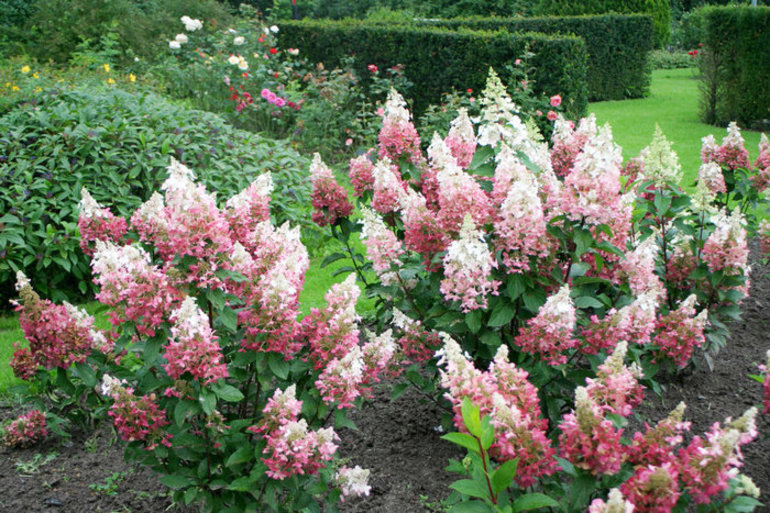
The main trouble in the maintenance of such a culture is to provide effective shelter for the winter, because it is very afraid of the cold and can be struck by frost. The most winter-hardy variety is panicled hydrangea. Some varieties tolerate a decrease in temperature values to -35 degrees Celsius. This is not surprising since the natural habitat of the variety is Sakhalin.
When sheltering this plant, it is enough to cover the root system, protecting the soil near the trunk circle. Moreover, such a measure is mandatory only for the extreme northern regions with severe winters. In the Moscow region and the middle zone, hydrangea perfectly tolerates the effects of cold weather even without covering events. The stalks of the panicled variety rarely freeze, and the formation of flower buds occurs on those shoots that have grown this year.
Tree hydrangea also boasts good frost resistance. But in harsh conditions, with the advent of autumn, it must be completely covered to prevent the freezing of young shoots. Nevertheless, even if you ignore this procedure, the plant will be able to survive the winter, and its flowering will continue to be plentiful. With the advent of spring, the tree-like variety begins active restoration. And if you cut off dead parts in time and apply fertilizer to the soil, this will only accelerate the process of active growth.
The least resistant to the effects of cold is large-leaf hydrangea. The species is particularly popular and has up to 600 varieties.
Being interested in when to harbor large-leaved hydrangea for the winter, it is important to consider the climatic conditions in which it grows, as well as the current weather regime.
The importance of the procedure
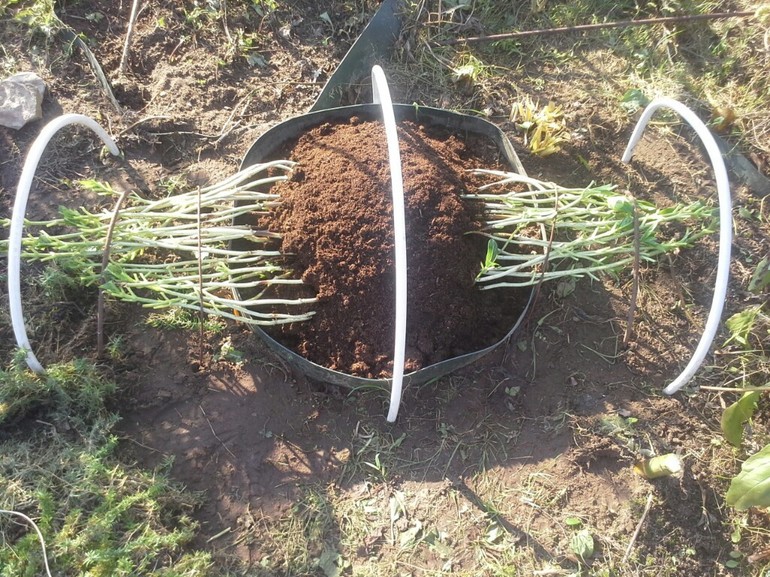
Before you cover garden hydrangea for winter, it is important to consider the type and variety of shrubs. First of all, those plants that bloom on last year's stems should be protected, since flower stalks are formed in the upper part of the shoot. And the arrival of autumn cold can seriously harm them if they are not properly covered.
The following species are in the high-risk zone - large-leaved hydrangea and Sargent hydrangea. But harsh climatic conditions can harm tree-like varieties. In addition, other species need shelter until they are 2 years old.
Separate decorative varieties are able to bloom on the escape of both last and current year. However, this is possible only with careful preparation of the bush for wintering.
If the gardener arranges a one-time flowering in late summer or early autumn, the winter shelter procedure can be made simpler.It is enough to trim the bush so that 3-5 leaves remain on it, and then cover it with dry leaves or spruce branches.
Preparing for the winter

Every caring gardener must understand how to prepare hydrangea for winter in the suburbs. In this case, the cultivation of this attractive crop will be successful, and flowering abundant. Preparatory work must begin in the fall, removing the lower leaves and stopping watering. Such events contribute to the rapid stiffness of young shoots. Also, before the first serious frosts come, you need to remove all the foliage, with the exception of the leaves in the upper part, since they are designed to protect flower buds.
So that the flower can develop a strong immunity, it must be fed with various mineral fertilizers. Wintering will be especially favorable if potassium and phosphorus compounds are added to the ground. At the same time, it is better to refuse nitrogen fertilizing, because they start the growth process of green mass.
Shelter culture is a prerequisite to prevent freezing. If you ignore this stage, young shoots will be destroyed or frozen with the advent of severe cold. If this happens, after the spring season returns, you will have to remove any dead shoots.
Shelter Methods
Currently, gardeners use different hydrangea shelter methods. The most common include the following options:
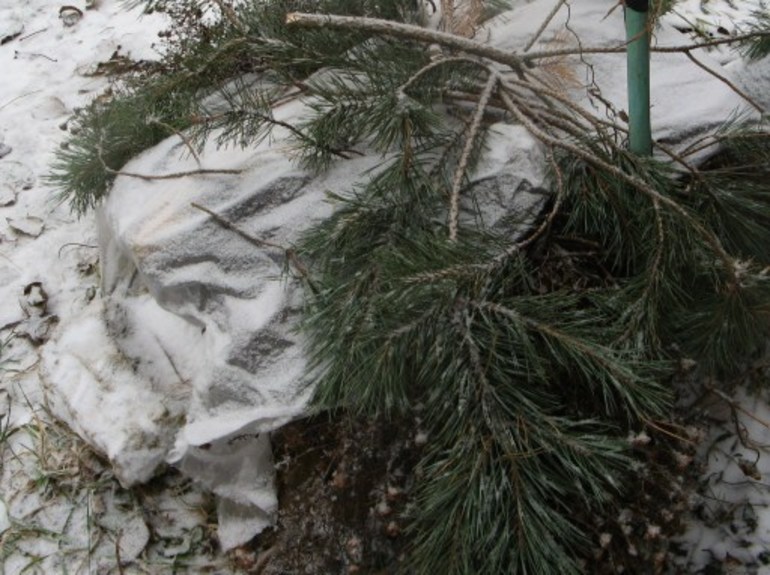
- Cultural shoots are tied with a rope and bend to the ground. Before this, boards with nails that are driven in a small distance from each other are laid on the ground. A plant is tied to them and covered with fallen leaves, as well as insulated with lutrasil with openings for air access. Young shoots are laid on spruce branches, and on top they are pressed by stones and additionally compacted by leaves.
- Shelter large-leaved hydrangea for the winter in the suburbs is carried out in another way. On the spruce branches that are located around the bush, you need to pour dry foliage. After that, shoots should be arranged in a circle, and then cover them with any suitable material. It can be branches, lutrasil, sawdust, and roofing material or a plastic film is stretched over the structure.
- Also, the flower is covered in this way: near the bush covered with burlap, a mesh frame is installed, and the remaining distance is lined with dry foliage. From above, the structure is sealed with a moisture-resistant material that does not allow water to pass through. In its quality, you can use roofing material.
- Still culture is covered with plywood, and long before the first cold weather. Branches are tied, pinned and sprinkled with soil or fallen leaves. A plywood sheet is placed on top of this insulation layer, and so that the structure is not blown away by the wind, it is reinforced with stones.
Proper care
In addition to the key procedures for sheltering hydrangea, it is important for the gardener to take care of the proper care of the crop during its active growth. It’s easy to take care of this colorful bush. It is enough to carry out such activities:
- Regular watering in the morning and evening with settled water at room temperature.
- Loosening the soil for normal airflow to the roots.
- Weed removal to release soil.
- Fertilizing with mineral compounds.
- Cutting work in the autumn.
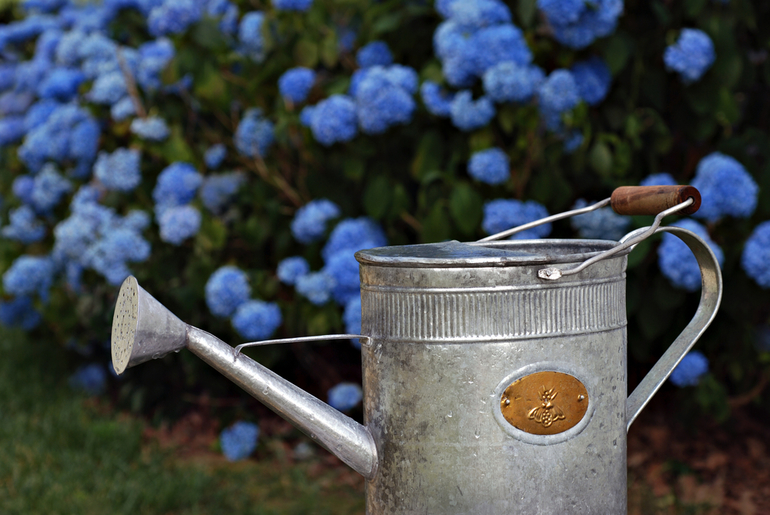
The most important procedure is watering hydrangeas. If she does not receive the right amount of life-giving moisture, this will lead to her death. However, stagnation of the liquid is also impossible, otherwise it will lead to putrefactive processes in the root system. The water used must be settled and warm.
If it is not possible to carry out regular watering, you will have to pour a lot of peat under the roots.Such procedures will increase the acidity of the soil, and also will help maintain moisture levels.
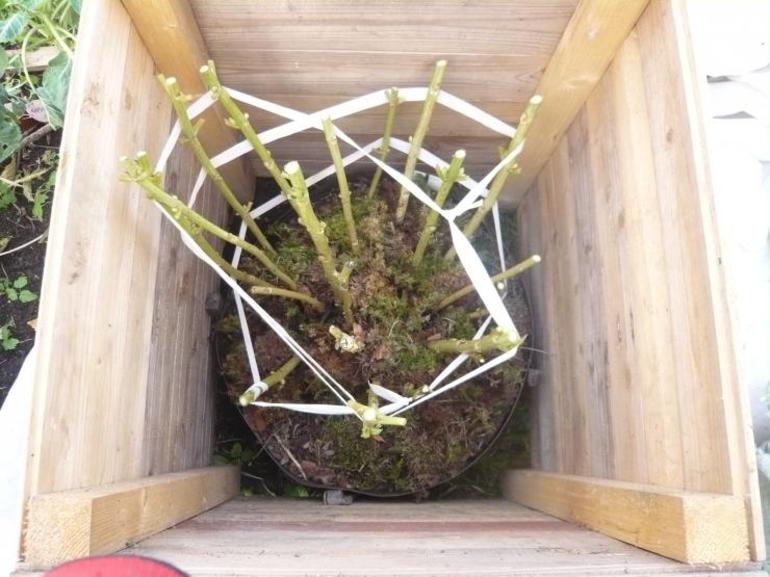
The root system of large-leaved hydrangea is located very close to the soil surface, so it is better not to plant it near trees or large bushes. Otherwise, the plant will not receive the right portion of nutrients and oxygen. Therefore, as a mandatory measure, it is necessary to loosen the soil above the roots, being careful not to damage the fragile roots.
The next important step in the care of hydrangeas is to remove weed plants. Such a crop requires the constant availability of minerals and vitamins in the soil, and if it is adjacent to weeds, the level of soil fertility will noticeably decrease. It is advisable to weed along with loosening, getting rid of all the roots of weed grass.
Feeding and trimming
For the normal development of hydrangea bushes, it is important to regularly feed them with special mineral compounds that will contribute to good growth and lush flowering. Feeding activities are carried out in this way:
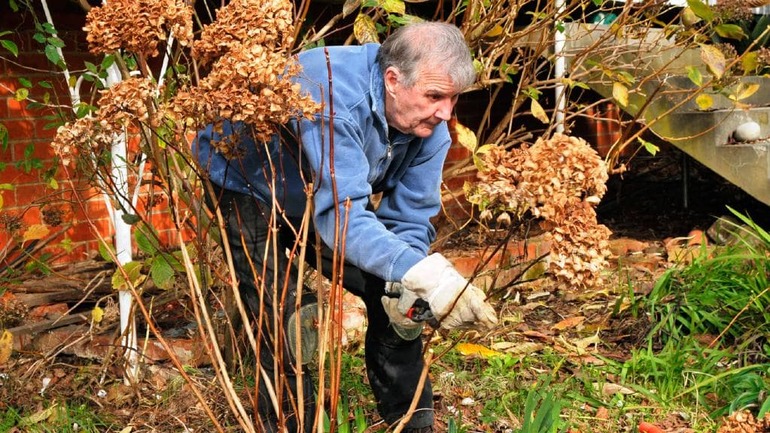
- The first feeding consists of urea, potassium and superphosphate and is introduced in early spring, when the culture comes out of hibernation and begins to grow actively.
- A similar composition, but without urea, is served in mid-summer, when the first buds are on the bush.
- At the end of the flowering period, a rotted compost or humus is introduced under the bush.
The most important stage of proper care before wintering is pruning. If you ignore the importance of the procedure, the plant will die with the advent of the first winter frosts. Large-leaved hydrangea differs from other species in its flowering on last year's shoots. Therefore, when performing work, it is necessary to trim the plant shortly. This rule applies to panicled species, and for tree-like.
You can also conduct a small shortening of the stems, but to completely get rid of the shoots is allowed only in those cases if they were hit by frost or dried. In addition, the gardener needs to get rid of shoots that have reached four years of age, because they are old, unable to demonstrate lush flowering in the warm period.
Large-leaved hydrangea is famous for the annual growth of new flower-bearing shoots, so it is important to carefully approach their shelter before wintering, otherwise they will begin to freeze out and not be able to postpone the coming winter. With proper shelter, the culture will be reliably protected from the most severe cold weather, so it will certainly thank its owner in the form of lush and plentiful flowering.
To protect such a colorful bush from freezing can only caring for and observing the basic rules of shelter. They are mandatory for the middle zone, and for the harsh northern regions with intense winters.
Therefore, figuring out how to cover large-leaved hydrangea for the winter, you must follow the basic rules and follow the instructions of experienced gardeners to prevent freezing of flowers. At the same time, the shelter used should be of the highest quality and densest, both for large-leaved hydrangea with lush pink bloom, and for other heat-loving varieties.
Spring opening
Large-leaved hydrangea differs from other varieties in its whimsicality and heat lovingness. Caring for such a crop can cause a lot of trouble to the gardener, but this is justified by its unique flowering in the warm period. If the flowers have successfully wintered, and the calendar spring has already arrived on the street, and the snow has melted, do not rush to remove the winter shelter.
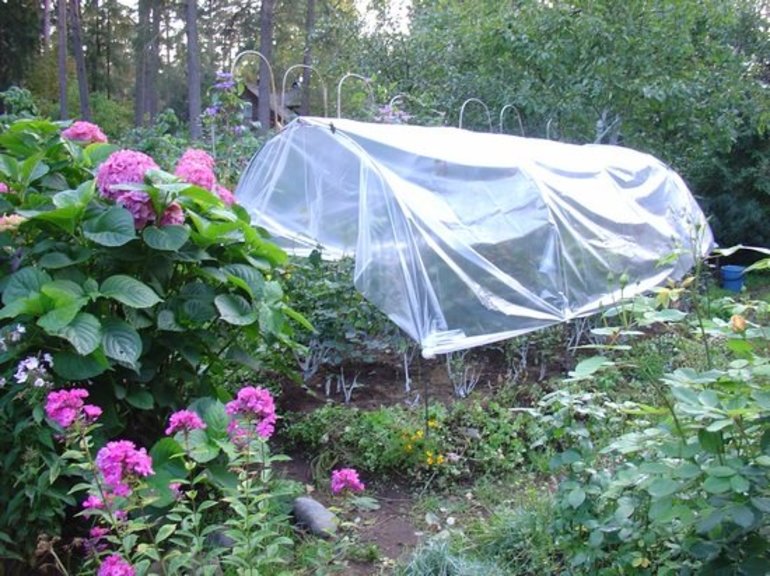
Indeed, in the first days of spring there is a risk of night frosts, which are extremely unacceptable for such a fastidious culture. Until the threat of freezing temperatures finally disappears, the bushes must remain under reliable protection. Otherwise, overwintered buds will freeze, and hydrangea will not be able to bloom in the new season.
Experts advise to gradually accustom hydrangea to new weather conditions and open it for a short time in the afternoon, and then close it back. Naturally, such care requires the gardener to permanently stay in the country, which is not always possible. Therefore, you need to be guided by real opportunities and not make mistakes that can ruin a culture.
First of all, when the temperature rises above zero, it is necessary to carry out ventilation. And with a further increase in temperature values, it is possible to remove the covering material, especially the film or roofing material, looking for an alternative to them. But to open the plant is fully allowed only with the return of stable plus temperatures.
Shelter of hydrangea for the winter is the most important stage in the care of such a picky culture. If you do not follow the basic rules for protecting a plant from cold, it will cease to please others with its flowering and will quickly freeze. Therefore, every gardener must understand how to properly insulate garden hydrangea, regardless of where it is located, either in the Moscow Region or in harsh Siberia.

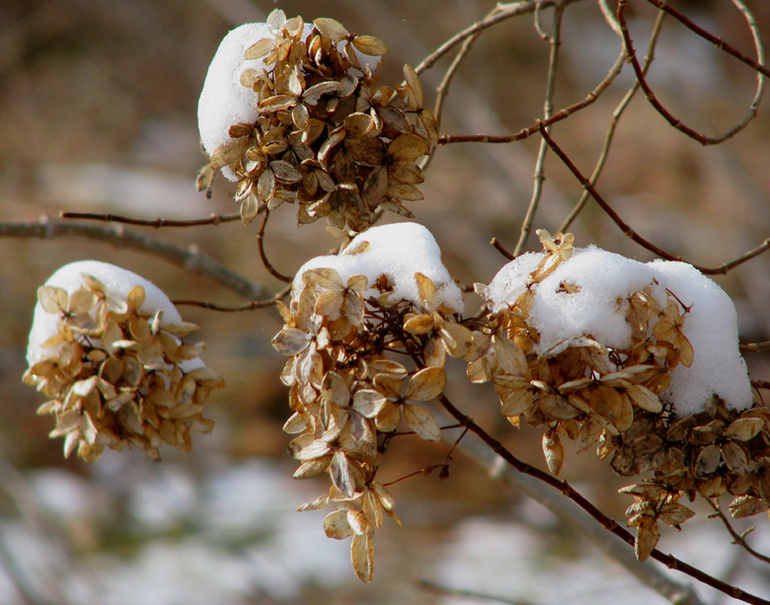
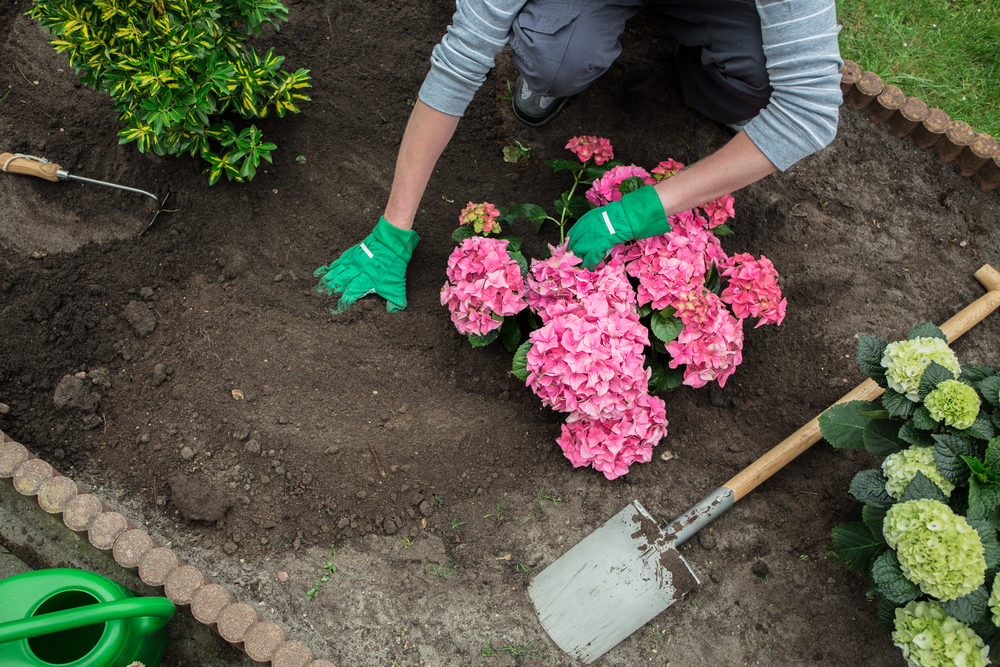

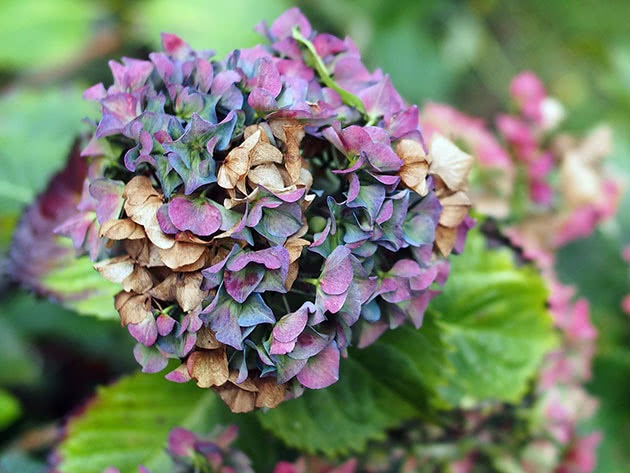 How to propagate hydrangea in the fall: methods, cuttings
How to propagate hydrangea in the fall: methods, cuttings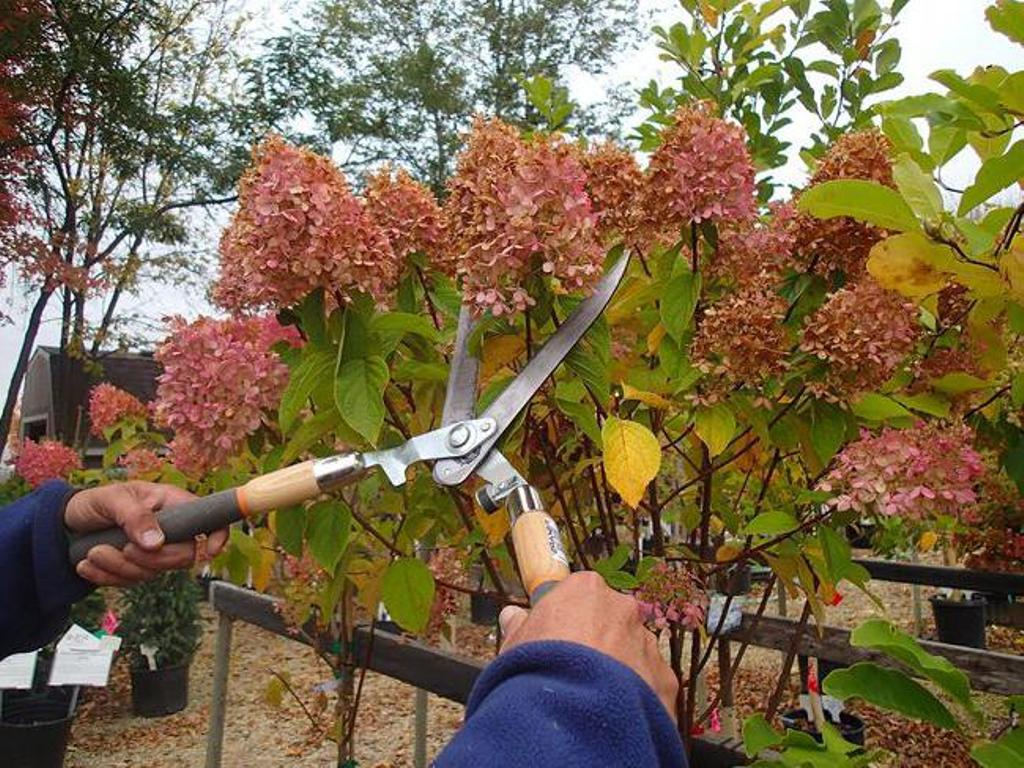 Hydrangea care in the fall and winter preparations
Hydrangea care in the fall and winter preparations How to feed hydrangea for lush flowering
How to feed hydrangea for lush flowering How to hide hydrangea in Siberia for wintering
How to hide hydrangea in Siberia for wintering